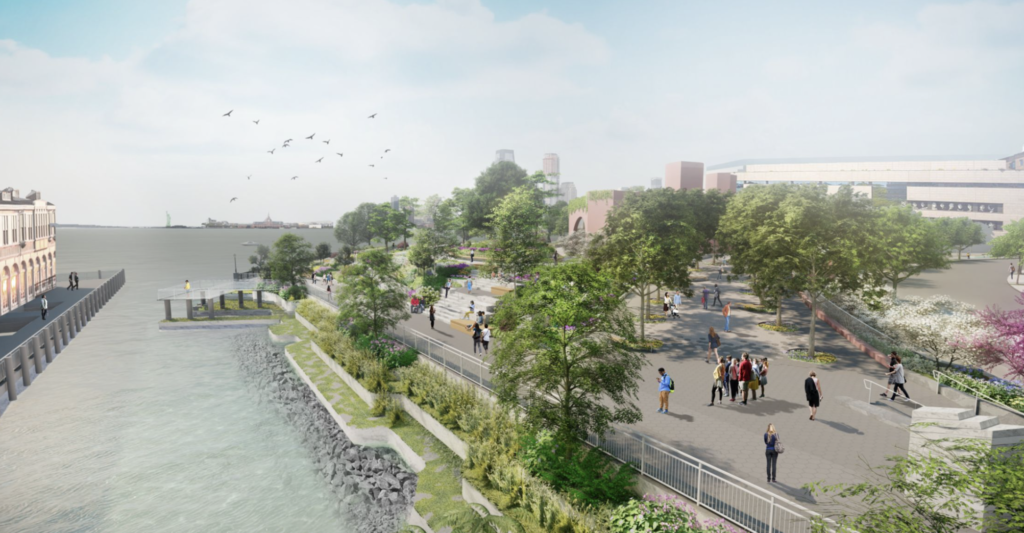Bloomberg: New York City was hit with an estimated $19 billion in damages and lost economic activity after Hurricane Sandy struck in 2012. The historic storm displaced thousands of residents from flooded homes, inundated subway tunnels, and left much of Manhattan in darkness. But when B.J. Jones talks about that disaster, he often focuses on a less dramatic storm impact — the storm surge that left the baseball and soccer fields at Battery Park underwater.
Jones, the president and chief executive officer of the Battery Park City Authority, brings up the ballfields to show that, amid the high-rises, there’s a real neighborhood here in this low-lying area at the southern tip of Manhattan, with roughly 16,000 full-time residents and its own Little League. A decade after Sandy, Jones is the head of the state-chartered corporation overseeing the Battery Park City Resiliency Project, a massive effort to reshape the coastline to prevent future catastrophic flooding.
“If we don’t change it, Mother Nature will,” Jones said.
Like so many such projects in New York City and around the nation and the globe, the resilience projects around Battery City are billed as critical in an era of climate change. They’re also expensive: The first phase of this effort, the South Battery Park City Resiliency Project — which will run from the Museum of Jewish Heritage through Wagner Park, Pier A Plaza and the Battery to a topographic high point near Bowling Green Plaza — is expected to break ground in September, with an estimated price tag of at least $221 million; a second phase estimated to cost at least $630 million that will stretch along the neighborhood’s northern and western boundaries is predicted to finish in 2026. Read more>>
